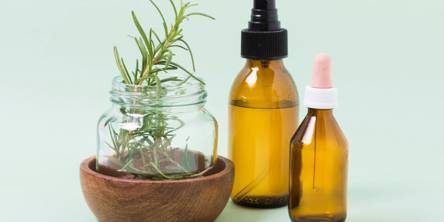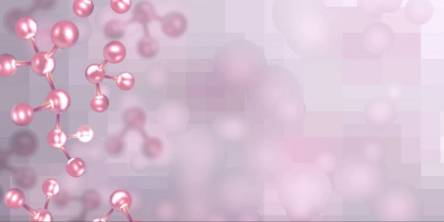Morton’s Neuroma - Symptoms, Causes & Treatment
A neuroma may appear in different parts of our body and is the thickening of nerve tissues. The most common type of is Morton’s neuroma, which develops in our feet between the third and fourth toes. It’s a very painful condition, affecting the nerves between the toes. It usually occurs in middle-aged women due to the compression or irritation of tight or high-heeled shoes. Runners also commonly suffer from this condition due to the increased toe pressure from running.
Symptoms
People suffering from Morton’s neuroma may experience one or more of the following symptoms:
- Pain
- Tingling, numbness or burning
- A feeling that there is something inside the ball of the foot
- A feeling that a sock is bunched up or there is something inside the shoe
The progression pattern of Morton’s neuroma:
- At first, the symptoms occur only occasionally, usually when performing aggravating activities or wearing narrow-toed shoes.
- When you remove uncomfortable shoes or massage your feet, the symptoms may temporarily go away.
- With time, the symptoms gradually get worse and can persist for days or weeks.
- As the neuroma enlarges, the symptoms become more intense and temporary nerve changes become permanent.
Causes
Morton’s neuroma has been linked to the following:
- Wearing pointy, tight or high-heeled shoes.
- Playing sports or being active - running sports or anything that involves putting pressure on your feet.
- Foot problems such as high arches, flat feet, hammertoes, and bunions.
Treatment
The treatment of Morton’s neuroma depends on the length of time you’ve had the condition and its severity. There are both non-surgical treatments and surgical ones.
Non-Surgical Treatments
- Padding - Shoe padding add additional support for the metatarsal arch, which helps to decrease the compression when walking.
- Icing - Putting an ice pack on the affected area can lessen the swelling.
- Orthotic Devices - Custom orthotic devices for the ball of your foot can help in relieving the pressure on the nerves.
- Painkillers - Over-the-counter anti-inflammatory painkillers like ibuprofen can reduce the pain and inflammation.
- Different Shoes - Footwear with a wider toe box can help to ease the pressure on the nerve in your foot.
- Injections - Treatment may include injections of local anesthetics, steroid medication, cortisone or other agents.
There’s a new experimental procedure called cryosurgery (or cryotherapy). It uses a small probe, which is inserted into the affected foot to destroy the thickened nerve tissue. It is starting to be offered in more and more clinics in the U.S.
Surgery Treatment
Surgery for Morton’s neuroma may be considered in patients who have very severe pain or if non-surgical treatments haven’t worked. You will need to consult a podiatrist to determine the best approach for your condition. During the procedure, a small incision will be made on the bottom or top of your foot, which will provide the surgeon access to the affected nerve. They will then either:
- Remove some of the surrounding tissue to increase the space around the nerve, or
- Remove part of the nerve which will result in your toes being permanently numb
The operation is performed using either a local anesthetic or general anesthetic. You won’t be required to spend the night in the hospital and will be able to leave the same day.
During post-op, you’re required to wear a special protective shoe until your foot heals enough to wear normal footwear. Although it will take weeks or months to fully recover, you will be able to walk shortly after the operation. In most cases, the surgical treatment of Morton’s neuroma provides good results and relieves the paint. There is a small possibility of complications, such as infection, swelling, and pain. Discuss the risk with your podiatrists before the procedure.
Similar Articles
There are so many benefits if we have strong stamina as stamina plays an important role in our healthy life activities. There are many ways to better our stamina as Ayurveda provides herbs, remedies, and exercises to improve stamina in natural ways.
Discover the transformative power of individual therapy in substance abuse recovery. Explore the profound impact on personal healing and recovery journeys.
Anatomically speaking, the most common definitions of the brain suggest it to be one of the largest and most complex organs of the human body made up of billions of cells called nerve cells or neurons which transmit electrical and chemical messages to each other via synapses and which in turn, is responsible for integrating sensory information and directing motor responses.
Cold sores are the worst blisters caused by herpes simplex type 1 virus. If you have ever had them, you can feel the pain to date. Cold sores fully develop and vanish within two weeks. These are also called fever blisters.
The hairs are the most important part of your personality. It doesn't matter if your life is perfect or not but you can be perfect if you have flawless hair. Hairs give you confidence as a great hairstyle is the best accessory. There are some quotes on hair as well like “When she flips her hair the world sees her shine”.
Addiction, a complex and multifaceted condition, affects individuals in uniquely personal ways.
More and more, telemedicine technology is being used to bring specialised medical treatment, i.e. best online medical consultation, to impoverished areas and groups for whom travel is challenging.
Telecare consultations are remote visits with healthcare experts via video calls and text messaging through authorized platforms. Patients get proper analysis and treatment through online medical consultation. These platforms are safe and convenient. Individuals can get access to various telehealth services through these certified portals.
Learn the differencet between NAD and NADH in this informative guide. Learn their roles in cellular energy and metabolism.









